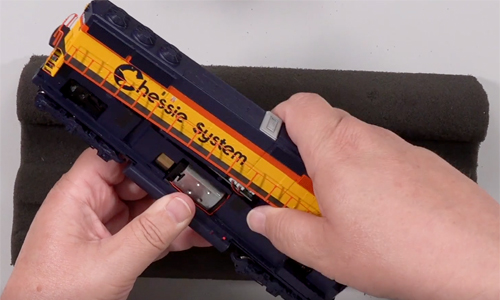Freight Car Class: Lesson 2, Upgrading Kits for Better Operation | In this lesson, David shares essential steps for upgrading your model’s operation and realism.
First, you’ll learn how to use the NMRA recommended practice (ARP 20.1) to calculate the target weight for your car, and how to install a peel-and-stick weight to achieve that standard.
Next, you’ll discover the steps for disassembling the underframe and trucks to paint the bare plastic parts in a more authentic looking, grimy appearance. See how to swap out the plastic wheelsets for metal ones, and check that the wheelsets are in proper gauge. You’ll also learn techniques for painting the wheel faces and axles.
Finally, David shows you how to upgrade the factory applied couplers, and paint them with a rust color. You’ll finish by learning how to check and adjust the coupler height and trip pin.
For model railroaders of varying skills and any scale, class is now in session — streaming exclusively on Trains.com Video!










A light car is a derailment waiting to happen. Larry explained with his car on his channel on YouTube. If the car is too light buy some Pine Car weights at your local hobby shop and some canopy glue and mount them under the cars shell. If that does not work buy a load. All cars must be weighed so they are the correct scale weight. See the NMRA Rules of Standards and Weights found on their website.
Now that the car is built time to test the couplers. If the coupler is too low you need to install shims to raise it to the correct level. If the pin is too low you need to bend it to the correct level so it does not get hung up on points or track and cause a short.
Note that Kadee also sells a semi-scale slightly smaller coupler line that is closer in size to a prototype coupler. Matches well in operation to their standard size line and, to my mind, looks better.
LaBelle has a coupler lubricant (#112) that can be used on the Kadee knuckle and in the coupler box to improve coupler action.